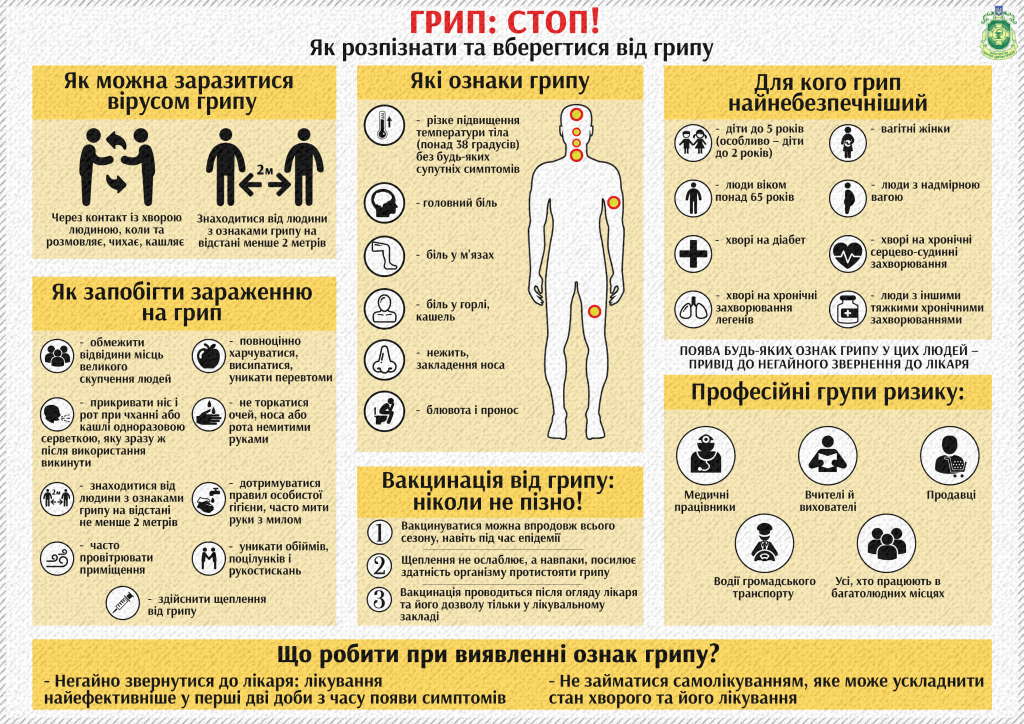Kyiv, January 15, 2016. There is no epidemic of influenza in Ukraine at present. For Ukraine, the World Health Organization (WHO) defines threshold disease at 578 patients per 100 thousand people. At present, there are 310 such cases, said Oleksandr Kvitashvili, Minister of Healthcare of Ukraine, at a briefing at Ukraine Crisis Media Center. The Minister urged not to play havoc and not to succumb to panic. “We live in the XXI century. We can cure these diseases. The main thing is to be careful, not to self-medicate but go to the doctor, and avoid contact with those infected,” he stressed.
Antiviral drugs are most effective during the first 48 hours of illness. All fatalities happened because of significant delays – patients turned to doctors a week or two after they fell ill. Laboratories confirmed 25 deaths. Of these, 22 were caused by the influenza A virus subtype H1N1, two –by B virus and one is atypical. Three more cases are being studied.
Svyatoslav Protas, Acting Head of the State Sanitary Epidemiological Service of Ukraine, and Sergiy Kramariov, Chief non-staff pediatric infectious diseases specialist at the Ministry of Healthcare of Ukraine, gave simple tips that can help prevent influenza. They advised to maintain humidity, wash hands, and avoid crowds. Vaccination is also effective. “You can be vaccinated even now, during the upswing of the disease circulation. This applies especially to vulnerable groups,” said Mr. Kramariov. According to Lyubov Nekrasova, Director of Ukrainian Center for Control and Monitoring Diseases at the Ministry of Healthcare of Ukraine, nine million people in Ukraine belong to the risk group. These are children, the elderly, pregnant women and others. But only 120,000 people have been vaccinated.
Ms. Nekrasova said that in Ukraine there are 25 regional laboratories, as well as a central reference laboratory that tests the samples for the presence of a virus strain. Central laboratories need 8-9 hours to analyze. The next step is sending copies to London, where the WHO European Office headquarters is located.
Ms. Nekrasova also cited statistics, according to which the smallest number of cases have been recorded in the western regions of Ukraine. Deaths were recorded in Odessa, Vinnytsa and Donetsk regions. Svyatoslav Protas said that no region has exceeded thresholds disease yet. At the same time, Kyiv and Vinnytsa are the leaders; there are fewer recorded patients in Kharkiv and Ivano-Frankivsk. In some areas of Sumy region, in Kyiv and Kramatorsk, they decided to introduce quarantine in schools. “Now, we are preparing an interactive map for towns and schools that will demonstrate the current situation and temperature conditions,” said Mr. Protas.
Taras Lyaskovskyi, Acting Head of Pharmaceutical Department at the Ministry of Healthcare of Ukraine, said that hospitals and pharmacy chains throughout Ukraine are currently provided with the necessary antiviral drugs. Strategic reserves of “Tamiflu”, “Tamivir” and “Relanza” – drugs to treat ARD (acute respiratory disease) – have been distributed and sent to the regions. “We have already collected applications to optimize regional needs,” added Mr. Lyaskovskyi. He also reminded that because of hysteria over medical supplies in 2009, when too many drugs were purchased, it became necessary to dispose of them because of their expiration date. The Ukrainian government has already held negotiations with suppliers of medicines. 1,100 packages of “Relanza” will be delivered to Ukraine on Monday. All remaining “Theraflu” were transferred to the network; new supplies are expected in seven to ten days. Lithuania also offered to provide humanitarian assistance to Ukraine in the form of antiviral drugs. It will arrive in a week or two.




